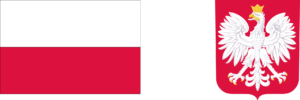The European Union has officially tightened its visa-free and multiple-entry policies for Russian citizens, marking a new stage in the bloc’s relations with Moscow. According to the decision unanimously approved by all Schengen Area member states, Russians will no longer be eligible for multi-entry Schengen visas—a measure that, while technical in nature, carries a profound political and symbolic weight.
This policy shift represents the culmination of a gradual process of estrangement between the EU and Russia that began after the annexation of Crimea in 2014 and reached a new intensity following the full-scale invasion of Ukraine in 2022. It signals not only a deepening isolation of Russian society from Europe but also the consolidation of a broader European consensus on the need to contain Russian influence in all spheres, including mobility and cultural exchange.
In 2019, before the pandemic and before the war, over four million Schengen visas were issued to Russian citizens, making them one of the largest groups of travelers entering the EU. By 2023, that number had plummeted to just 500,000. This decline was not the result of a single policy, but rather the consequence of a progressive tightening of entry conditions, cancellations of bilateral visa facilitation agreements, and growing public hostility across Europe toward tourism from a country engaged in a brutal war of aggression.
The end of multiple-entry visas marks a fundamental transformation in how Europe perceives Russia. Previously, long-term and repeat visas were seen as a tool of openness—a means of fostering contact between Russian citizens and Western societies, encouraging mutual understanding, and supporting the idea of a shared European space beyond political divisions. Today, that ideal has been replaced by a logic of containment. European policymakers increasingly argue that granting Russians the privilege of free movement contradicts the moral and security imperatives of the moment.
Several EU diplomats have emphasized that the decision is not aimed at punishing ordinary Russian citizens, but at safeguarding European security and preventing the misuse of Schengen visas. Still, the practical effect will be to sharply reduce the number of Russians able to enter the EU, whether for tourism, study, or business. The tightening will particularly affect cross-border regions such as Finland, Estonia, and Latvia, where travel and trade with Russian citizens were once part of everyday life.
At the same time, the new policy underlines a broader geopolitical realignment. Europe is closing the door on the notion of “business as usual” with Russia, even at the level of people-to-people contact. What was once seen as a bridge is now viewed as a potential vulnerability. The Schengen Area—symbol of European openness and integration—has become, for Russians, a barrier.
For many observers, this development represents the definitive end of an era. The vision of post-Cold War Europe as an open space of movement and dialogue has given way to a hardened frontier between democratic Europe and an increasingly authoritarian Russia. Whether this will contribute to long-term stability or deepen mutual isolation remains to be seen. Yet one thing is clear: the European Union’s latest decision confirms that the rift between Russia and Europe has become structural—and that even the seemingly apolitical realm of visas has turned into a theater of geopolitical confrontation.






